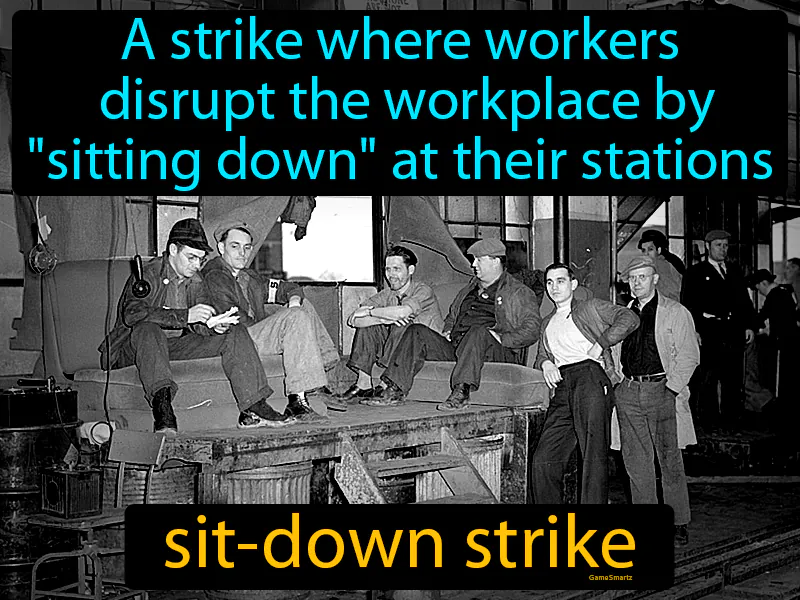Sit-down Strike
Sit-down Strike: Easy to understand
The sit-down strike became a significant form of protest during The New Deal era because it highlighted workers' demands for better conditions and rights, directly challenging company power. This method of striking, notably used in the 1936-1937 General Motors strike, was effective in securing labor rights and union recognition. It underscored tensions between labor and management, a theme still relevant today as workers continue to advocate for fair wages and safe working environments. These strikes paved the way for laws that protect workers' rights, impacting people today by ensuring safer workplaces and the ability to negotiate for benefits. For example, the ability of employees to demand fair treatment and organize collectively can lead to improved job conditions, directly affecting their quality of life and financial stability.

Practice Version

Sit-down Strike: A strike where workers disrupt the workplace by "sitting down" at their stations. A sit-down strike is when workers stop working but remain at their workstations to protest for better conditions or pay.